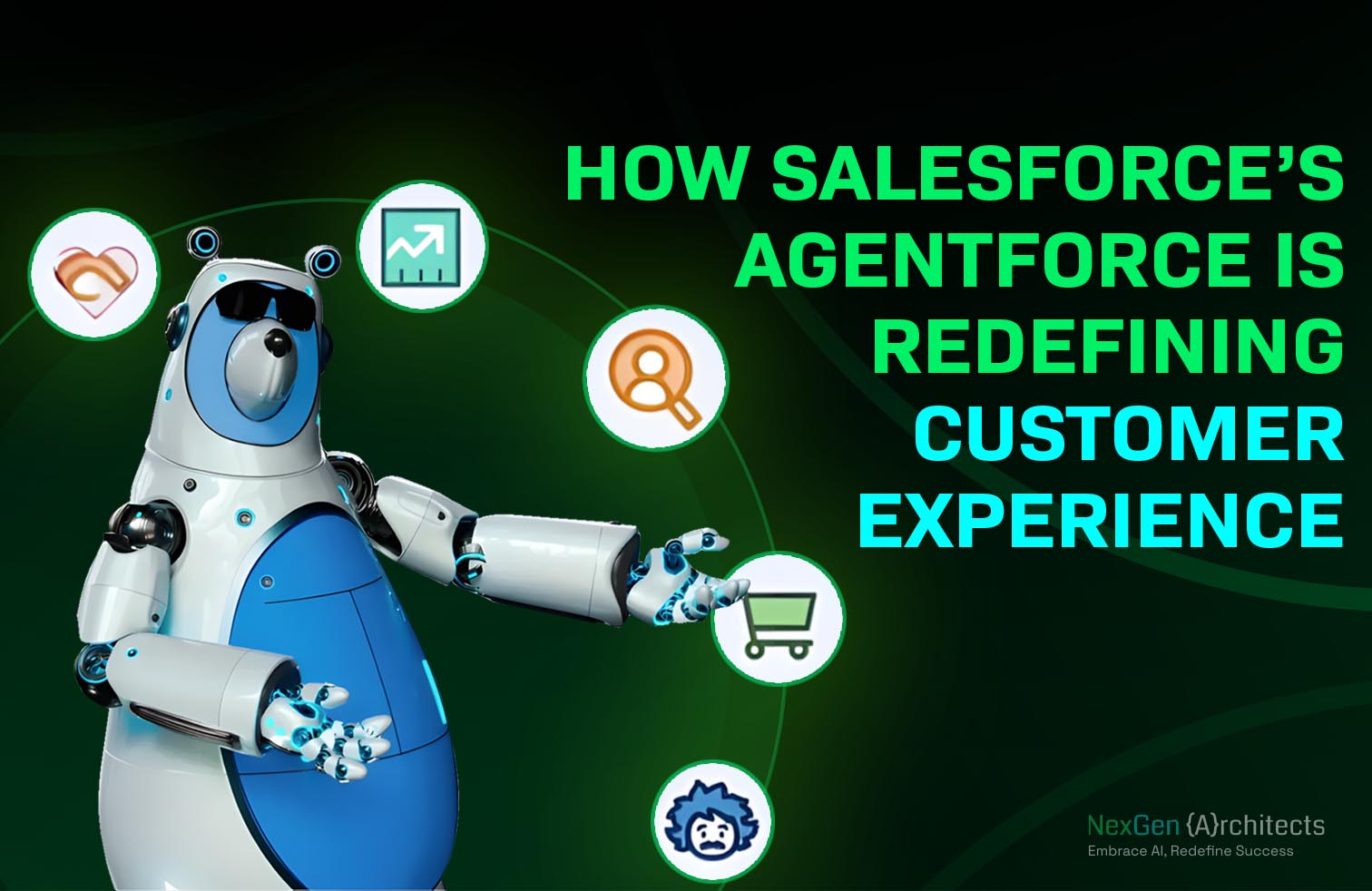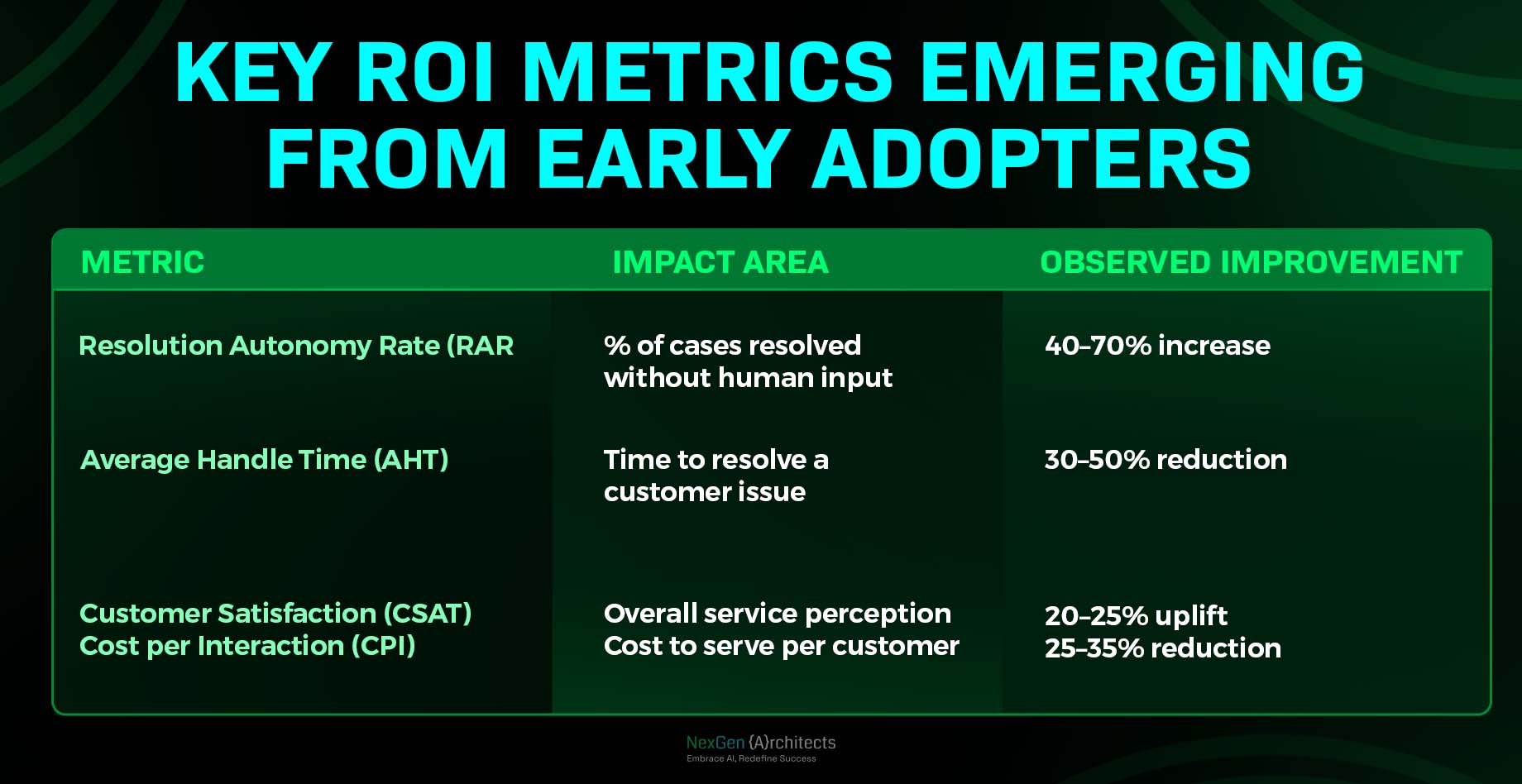How Salesforce’s Agentforce Is Redefining Customer Experience
Learn how Salesforce’s Agentforce uses autonomous AI agents, MuleSoft integration, and Einstein 1 intelligence to transform customer experience across industries.

In every era of enterprise technology, Salesforce has been the change-maker.
From cloud computing to mobile-first CRM, from predictive analytics to generative AI, each leap has pushed businesses to rethink how they connect with customers.
Now, Salesforce is redefining that connection once again with Agentforce, a new platform that turns artificial intelligence into an active, autonomous workforce.
Agentforce introduces AI agents that can perceive context, make decisions, and take action across Salesforce applications and connected systems.
They work 24/7, at scale, and within guardrails that ensure security and compliance.
It’s not just about doing things faster. It’s about building customer experiences that are predictive, personalized, and perpetually improving.
From Reactive CX to Agentic CX: The Evolution
For decades, customer experience revolved around reactive service. Customers reached out. Agents responded.
AI tools like chatbots made responses faster, but the model remained the same: humans at the center and systems in support.
Agentforce changes that model.
It ushers in what Salesforce calls Agentic CX where intelligent agents don’t just assist but also act.
They analyze customer data in real time, detect intent, and autonomously execute tasks that once required manual input.
This means businesses can now:
- Predict and prevent customer issues before they surface.
- Personalize interactions dynamically using live context.
- Scale operations without increasing headcounts.
In essence, customer experience is no longer something delivered after an interaction.
It’s something orchestrated continuously by a network of intelligent agents that never stop learning.
How Agentforce Works: Unified Data & Autonomous Intelligence
The real breakthrough behind Agentforce is its deep integration of data, AI, and automation, all operating within the same trusted Salesforce ecosystem.
Here’s how the layers work together:
- Salesforce Data Cloud provides unified, real-time customer data. Agents don’t rely on fragmented inputs, they operate with a 360° view.
- Einstein 1 Platform gives these agents reasoning capabilities allowing them to interpret intent and decide what to do next.
- MuleSoft enables these actions to extend beyond Salesforce updating ERP systems, sending notifications, or triggering external workflows.
- Agent Fabric, a governance layer, enforces compliance. Every decision and action is auditable, policy-checked, and explainable.
Together, these components create what’s effectively a new digital nervous system for the enterprise one that connects departments, data, and decisions seamlessly.
Real-World Transformation: How Companies Are Using Agentforce
The real proof of innovation is in deployments.
Across industries, early adopters are using Agentforce to tackle real business problems and unlock measurable value.
The Adecco Group: Transforming Recruiting with AI Agents
Adecco, a global leader in workforce solutions, has reimagined recruitment through Agentforce.
Their AI agent acts as both recruiter assistant and candidate concierge scanning millions of resumes, matching candidates to curated job opportunities, and proactively guiding them through next steps.
The result?
A hiring process that is not only faster, but also fairer with reduced bias, higher match quality, and an experience that feels personal at scale.
Heathrow Airport: Making Travel Seamless
Heathrow, one of the busiest airports in the world, uses Agentforce to improve passenger experience from check-in to boarding.
By combining data from flight APIs, service systems, and Salesforce Data Cloud, Heathrow’s digital agent can instantly answer passenger questions about flight status, gates, baggage, or amenities.
It operates around the clock with over 95% response accuracy, turning what was once an information bottleneck into a proactive, stress-free travel experience.
reMarkable: Scaling Customer Support Without Scaling Teams
For reMarkable, the company behind the paper tablet customer service excellence is core to their brand.
When demand surged during the holiday season, instead of hiring more staff, they built Mark, an Agentforce-powered AI assistant.
Within weeks, Mark handled thousands of conversations, resolved queries instantly, and maintained a consistent brand tone freeing human agents to focus on high-value issues.
That’s not cost-cutting; that’s CX scalability done right.
Measuring the ROI of Agentforce: From Cost to Value
Unlike traditional automation, Agentforce doesn’t just reduce workload, it creates measurable business outcomes.
Key ROI Metrics Emerging from Early Adopters

These are outcomes already reported by companies piloting Agentforce across sales, service, and marketing.
It’s proof that autonomous CX doesn’t just enhance experience but also pays for itself.
Governance and Trust: The Enterprise Backbone of Agentforce
AI adoption in the enterprise often stalls around one word, trust. Can we rely on AI to act responsibly on our behalf?
Salesforce designed Agentforce to answer that question by embedding trust and transparency at every layer.
Through MuleSoft Agent Fabric, every agent action is:
- Authenticated through enterprise policy
- Logged with metadata for full traceability
- Audited for compliance and explainability
This ensures that even as AI operates autonomously, it never operates unmonitored. It’s AI with accountability something consumer-grade systems simply don’t provide.
New Workforce: Humans and Agents Together
Agentforce isn’t here to replace human employees, it’s here to elevate them.
In an Agentic CX model:
- AI agents handle repetitive and predictable work such as case triage, data entry, or campaign optimization.
- Human teams focus on empathy, creativity, and complex decision-making.
This partnership redefines workforce design.
Where humans once worked in the system, they now work with the system co-orchestrating outcomes with intelligent agents.
That’s what makes Agentforce not just a product innovation, but a management evolution.
Strategic Advantages for CX Leaders
For executives, Agentforce represents more than operational efficiency. It’s a strategic capability that reshapes how organizations compete.
- Speed to Service: Reduce wait times and resolution bottlenecks.
- Experience Consistency: Deliver identical service quality across time zones and channels.
- Scalability Without Complexity: Expand support capacity without additional infrastructure.
- Data-Driven Agility: Use real-time insights to evolve CX continuously.
- Regulatory Confidence: Built-in compliance makes expansion safer and faster.
By combining all these factors, enterprises can deliver experiences that are consistent, proactive, and profitable.
Road Ahead: From Automation to Autonomy
The launch of Agentforce signals something much bigger than an AI upgrade. It marks the beginning of a new operating era, one where enterprises run on autonomous systems that work alongside humans, not behind them.
The next evolution of CX will be measured not by ticket volumes or resolution times, but by:
- Predictive accuracy of agents
- Real-time personalization at scale
- Long-term retention driven by proactive engagement
Businesses that build this foundation early will lead in customer trust, brand loyalty, and operational performance.
Conclusion: Framework for the Future of Experience
Agentforce is not only a glimpse of the future but also the framework for it. By merging autonomy, intelligence, and governance on a single trusted platform, Salesforce has given enterprises the ability to deliver experiences that are self-optimizing, scalable, and deeply human.
For CX leaders, it’s no longer about managing support teams, it’s about designing ecosystems where AI and humans operate as one.
And that’s how Salesforce’s Agentforce is truly redefining customer experience for the AI era.

.svg)

